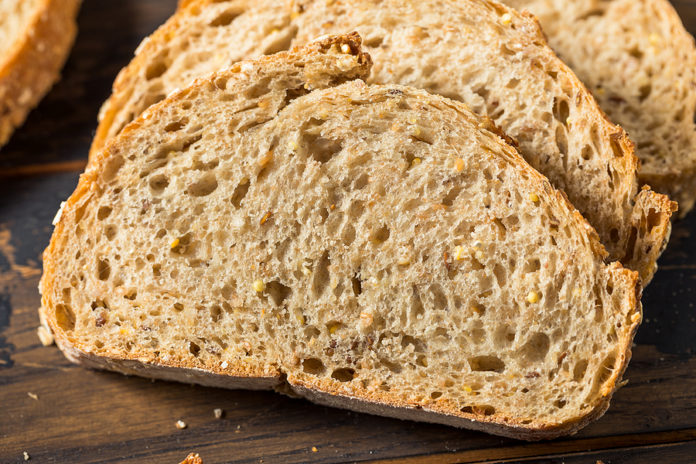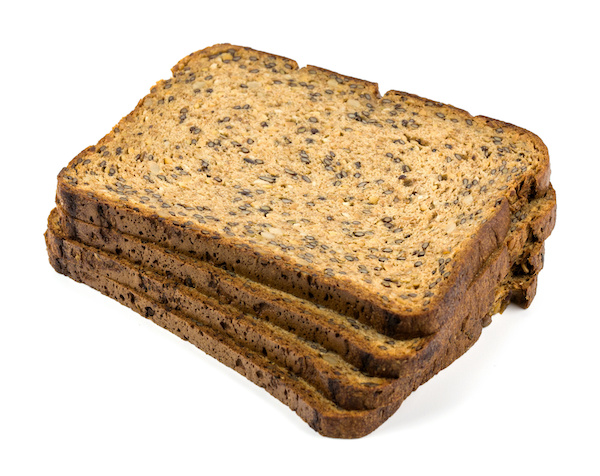
By Arnaud Dubat, product and applications director for CHOPIN Technologies, a product brand of KPM Analytics
Protein is still a hot nutrient of choice for consumers. The desire to follow healthier eating patterns has prompted food processors to include extra and unique proteins into a variety of categories, including snacks and baked goods. An increase in non-traditional protein ingredients and flours that can include pulses, hemp, and even insect powders, presents both opportunities and challenges for commercial bakeries and snack food processors. Proper instrumentation can help answer these pressing questions:
- How do I incorporate additional/new proteins into formulation while maintaining desired product characteristics like texture, volume, and overall consistency?
- How will these new protein varieties impact processing?
Consumers consider protein a desirable macronutrient
Consumer trends and eating patterns are driving the development and introduction of protein fortified foods including baked goods and snacks. According to the International Food and Information Council (IFIC) 2022 Food & Health Survey, protein is the top nutrient of choice sought by consumers of all ages, with 59% of adults in the U.S. consciously trying to include more protein in their diet.
But not just any type of protein will do. Consumers increasingly look to plant-based proteins for a variety of reasons, including sustainability and a better-for-you product profile. As just one example of the result of this trend, pea protein sales are soaring, with a projected global CAGR of 23.6% from 2018 to 2025.
Alongside their benefits, however, novel protein ingredients also pose challenges to food manufacturers attempting to incorporate them into product development, particularly for baked goods.

Protein incorporation poses challenges
The main goal for any baker when creating a protein-fortified product is to remain as close as possible to the appearance, taste, and texture of the original. One challenge to this goal, among many related to protein fortification, is hydration. The amount or percentage basis of protein within a powder or flour impacts water absorption.
Plant proteins for baking can include simple flours, concentrates, or isolates, with the protein content ranging from 10-30% on a dry basis for flours and up to 85% for an isolate.
The higher the protein concentration, the greater the water absorption. Depending on the application, if the flour does not absorb enough liquid or water, this can create a dry, crumbly texture in the finished product. On the other hand, if too much water is added to compensate, the dough can become sticky, causing machinability issues.
Proteins also impact extensibility and dough elasticity as well as final product volume, structure, and palatability. Depending on the source, alternative proteins can pose both taste and textural challenges. The bottom line is that the more protein of any type is added to a formulation, the more it can affect processing and final product characteristics. The goal is to strike a proper balance.
Formulators turn to blends or hybrid mixes
What we are seeing in the market right now are lots of mixes and blends that include whey and pulses. Hemp flour is trending, and of course, various companies are experimenting with insect powder.
When creating a blend or a mix, proper analytics can help the baker determine proper levels for substitution of wheat flour with an alternative. One study in Applied Sciences compared breads incorporating pea protein concentrate and soy protein concentrate to a standard control bread made strictly with wheat flour. The study substituted wheat flour by 5%, 10%, and 15%, finding a minimum 10% incorporation of the alternative flour allowed for a “high protein” claim in the finished product.
The higher the level of protein concentrate additions, the stronger the intensity in the crumb color and crust. In addition, a stark contrast was observed in bread volume, porosity and elasticity in the protein concentrate loaves compared to the control.
Overall, the study inferred that bakers striving for a nutritional claim might find it easier to substitute wheat with alternative flours that have a high level of protein. Compared to alternative flours with low levels of protein, those flours higher in protein content can be included as a lower percentage of the overall formula. This can help mitigate the loss of gluten on dough rheology and final product texture, appearance, and acceptance.
Protein is linked to gluten levels
Gluten is the dividing line between what is considered a functional flour and those that are non-functional. For this reason, it contributes to wheat’s reputation as the most versatile of flours used for baking.
Wheat flour protein levels correlate to gluten content. Hard wheat contains a higher level of protein and gluten than soft wheat. Typically, baked goods such as bread, bagels, and even pretzels rely on gluten and a higher protein level (12-14%) for structure compared to pastries made from pastry flour (8-9% protein) and cookies or cakes (5-8% protein).
Gluten is what makes a dough a dough, so it is extensible and retains gas to form a proper shape and texture, among other properties.
When combining alternative protein flours with wheat flour, the protein level and, therefore, the gluten content of the wheat flour selected must be taken into consideration for proper dough development.
Protein is just part of the total equation
The properties of gluten help illustrate the fact that an initial flour analysis supplies a fraction of the information that a complete analysis could supply to help guide the baking process.
Dough is a complex system with multiple interacting components. Heating a protein changes its structure and interaction with other ingredients. Overall dough behavior and its final outcome are linked to interactions between the flours, starches, and other ingredients included in the formulation, plus mix times, resting time, and time and temperatures. An objective analytical tool can quantify dough behaviors and rheological properties.
Helpful information for the baker resulting from analytical testing should answer questions such as:
- How will this material behave in a dough?
- What will happen during proofing and baking?
- How much water should be added for proper dough consistency?
- Will this ingredient and corresponding formulary adjustments impact mixing time?
- If another protein is mixed in a blend with wheat flour, what protein level should the wheat flour contain?
For example, a round of analytical tests conducted on two varieties of cricket protein powder mixed with wheat flour answered many of these questions. The tests identified the optimal amounts of cricket flour for incorporation and measured the impact these protein powders had on the entire production process, from dough formation through the final loaf.
Testing found it is feasible to replace traditional wheat flour with a maximum of 5% cricket protein powder. Adding greater quantities highly impacted extensibility. The poor dough expansion and gas retention resulted in lower loaf volume and decreased the number of air cells. This also caused more rapid staling.
There are many varieties of insect powder available in the marketplace, and each could behave in a different manner, requiring an independent analysis of each type.
Analytical tools paint a clearer picture of dough quality
A dough characterizer offers a universal and comprehensive analysis of dough behavior during mixing, during the heating and cooling cycle, and at different mixing speeds.
Universal means that the dough characterizer can analyze the behavior of a broad spectrum of flour types, such as white flour, whole grain, rice, corn, sorghum, soy, flax, amaranth, potato, buckwheat, quinoa, millet, teff, and more.
It is comprehensive because it evaluates six dough quality criteria through the entire dough production cycle:
- Water absorption
- Effects of mixing (development and stability)
- Gluten resistance to heat
- Maximum viscosity
- Amylase activity
- Starch retrogradation
The analytical process is also versatile, offering bakers multiple test protocols to best characterize dough behaviors using a small sample size of just 50g of the selected flour or a 75g dough sample.
In one instance, a bread baker was having issues with high water absorption and sticky dough. Upon investigation with an analytical tool, the baker learned this situation was due to too much damaged starch and a weak balance with protein. The baker was able to correct this issue by setting new guidelines for the miller (flour supplier) while also adjusting the production process based on a deeper understanding of how the dough would behave.

Validation of the baking process
An instrument analysis offers bakers a swifter validation of an ingredient or processing parameter. This eliminates the rigorous, time-consuming, and expensive process of multiple production tests. Bakers are able to move quickly past the testing phase and back into production.
In addition, it offers a more comprehensive test model compared to testing methods that simply analyze protein content without looking at characteristics affecting dough formation and staling.
Seeing a complete picture, bakers can adjust their formulas for desired dough behavior and better machinability. In addition, the analysis greatly speeds reformulation and new product testing. Companies can introduce new products for a lower cost and greater ROI.
 Arnaud Dubat is a Product & Applications Director for the CHOPIN product line of KPM Analytics. He holds a Masters in Sciences and Techniques for the agri-food industries as well as a Masters in Strategic Marketing. He is based in Paris, France.
Arnaud Dubat is a Product & Applications Director for the CHOPIN product line of KPM Analytics. He holds a Masters in Sciences and Techniques for the agri-food industries as well as a Masters in Strategic Marketing. He is based in Paris, France.








